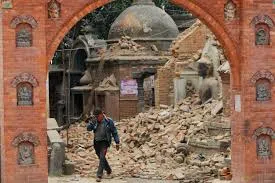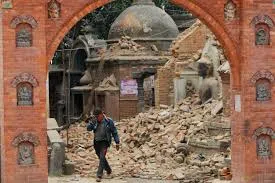 The death toll from Saturday’s earthquake in South Asia has surpassed 4,000 people.
The death toll from Saturday’s earthquake in South Asia has surpassed 4,000 people.
Nepal police say on their Facebook page late Monday evening that 3,904 deaths had been counted in Nepal and 7,180 people were injured.
In addition, an avalanche caused by the earthquake Saturday killed 18 people at Mount Everest’s base camp, 61 people were killed in neighboring India, and China reported 25 people died in Tibet.
The toll is expected to rise as assessments are made in vulnerable mountain villages that have been inaccessible since the quake.
NEPAL-EARTHQUAKE
Trying to reach quake survivors
KATHMANDU, Nepal (AP) – Emergency aid flights are landing in Nepal, with relief workers who will try to locate and rescue victims of Saturday’s deadly earthquake.
A British Royal Air Force plane loaded with aid is among the flights that have been sent to Nepal. British volunteers are already helping with search-and-rescue operations.
The scene is a chaotic one at the small airport in Nepal’s capital of Kathmandu. The onslaught of earthquake relief flights is causing major backups on the tarmac. India’s defense ministry says four Indian air force planes carrying communication gear, aid supplies and rescue personnel were forced to return to New Delhi today because of airport congestion.
NEPAL-EARTHQUAKE: RELIEF WORKER
Aid worker says there’s a need for basics
KATHMANDU, Nepal (AP) – Relief worker Brad Kerner of Save the Children says basic necessities are the immediate need in Nepal after Saturday’s devastating earthquake, which killed more than 4,000 people. He also says waterborne and infectious diseases are a risk because people are living outdoors in crowded, camp-like situations.
Kerner says, “A lot of people are sleeping outside, so they are all homeless in a way. The longer people stay out of homes, and live in camps” clean water practices will fall short.
Save the Children was getting in medical teams. Kerner said: “We are making sure there is shelter, food and water available. We’re handing out baby kits with blankets, soap, and other necessities for newborns, who are the most vulnerable in such situations.”





